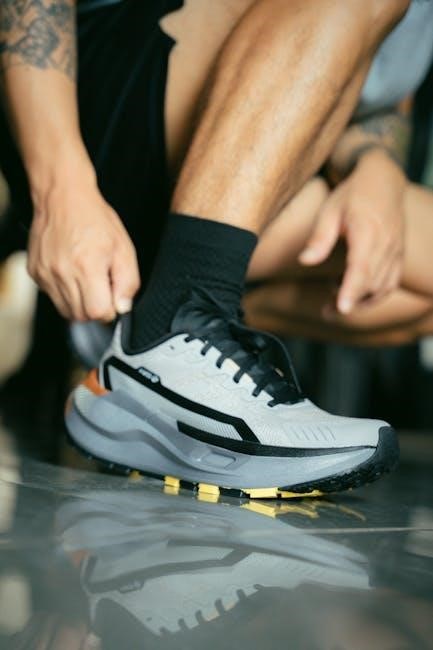Printable Tattoo Aftercare Instructions: A Comprehensive Guide
Proper tattoo aftercare is essential for maintaining the vibrancy and longevity of your new ink. This comprehensive guide provides detailed, printable instructions to ensure optimal healing and minimize potential complications. Follow these steps carefully to achieve the best possible results and safeguard your artwork.
Congratulations on your new tattoo! Tattoo aftercare is a vital part of the tattooing process, influencing how well your tattoo heals and its appearance in the long run. Treating your new tattoo like an open wound is crucial for preventing infection and ensuring that the colors remain vibrant. Immediate aftercare begins the moment your artist finishes and wraps your tattoo.

The initial bandage serves as a protective barrier against bacteria and environmental irritants. Knowing how to properly remove this bandage and initiate a cleaning regimen is the foundation for successful healing. This guide provides clear, printable instructions, giving you a reference for this critical phase. Consistent care, including gentle washing with antibacterial soap and the application of a thin layer of recommended ointment, forms the core of the aftercare routine.

Understanding and adhering to these instructions will help you navigate the healing process effectively. Remember, each step is designed to promote healthy skin regeneration and preserve the artistic integrity of your tattoo. By following this printable guide, you equip yourself with the knowledge necessary to protect your investment and enjoy your tattoo for years to come.
Importance of Proper Aftercare
Proper tattoo aftercare is paramount to ensuring a vibrant, long-lasting tattoo and preventing potential complications. Neglecting aftercare instructions can lead to infections, scarring, and fading, ultimately compromising the artwork you’ve invested in. A new tattoo is essentially an open wound, making it susceptible to bacteria and other harmful elements in the environment.
Following a meticulous aftercare routine significantly reduces the risk of infection, promoting optimal healing and preserving the integrity of the tattoo. Consistent cleaning, moisturizing, and protection from the sun contribute to the skin’s natural regeneration process, ensuring the colors remain bright and the lines stay crisp.
Furthermore, proper aftercare minimizes the likelihood of excessive scabbing, which can distort the design and cause uneven healing; By diligently adhering to the recommended guidelines, you are actively safeguarding your skin and protecting the artistic investment you’ve made. This printable guide is designed to equip you with the knowledge and steps necessary to navigate the healing process successfully, resulting in a beautiful, well-maintained tattoo that lasts a lifetime.
Immediate Aftercare (First 2-10 Hours)

The initial hours following your tattoo session are crucial for setting the stage for proper healing. Your tattoo artist will apply a bandage or protective covering to shield the fresh tattoo from bacteria and external irritants. It is essential to leave this bandage in place for a minimum of two hours, but ideally no longer than ten hours, as advised by your artist.
The bandage serves as a barrier, preventing airborne contaminants from entering the open wound and minimizing the risk of infection. During this period, your tattoo will likely ooze a mixture of blood, plasma, and excess ink. This is a normal part of the healing process and should not be a cause for alarm.
Avoid the temptation to remove the bandage prematurely, as this could expose the tattoo to harmful bacteria and increase the risk of complications. However, leaving it on for too long can trap moisture and create an environment conducive to bacterial growth. Therefore, adhering to the recommended timeframe is critical. Once the designated time has elapsed, carefully remove the bandage, preparing your tattoo for the next stage of aftercare.
Removing the Bandage
After the initial 2-10 hours, carefully removing the bandage is your next critical step. First, ensure your hands are thoroughly washed with antibacterial soap and warm water to prevent introducing bacteria to the fresh tattoo. Approach the bandage removal with caution and patience. Avoid yanking or ripping the bandage off, as this can damage the delicate skin and disrupt the healing process.
If the bandage sticks to the tattoo, resist the urge to force it. Instead, gently moisten the bandage with lukewarm water. This will help loosen the adhesive and make removal easier and less traumatic. Continue to apply water until the bandage loosens enough to be peeled away without resistance.
Once the bandage is completely removed, take a moment to assess the tattoo. You may notice some redness, swelling, and oozing, which are all normal signs of the healing process. Avoid touching the tattoo with unwashed hands or picking at any scabs that may be forming. The goal is to keep the area clean and allow it to heal naturally. Proceed to the next step: gently washing the tattoo.

Washing the Tattoo
Following bandage removal, washing the tattoo is paramount to prevent infection and promote healing. Use clean hands and lukewarm water. Avoid hot water, as it can be too harsh on the sensitive skin. Gently lather the tattoo with a mild, fragrance-free, antibacterial soap. Ensure the soap is free of dyes and harsh chemicals that could irritate the tattoo. Dial is often recommended.
Using your fingertips, gently cleanse the entire tattooed area, removing any traces of blood, plasma, or excess ink. Avoid using washcloths or sponges, as they can harbor bacteria. Do not scrub the tattoo vigorously, as this can damage the skin and prolong the healing process. Instead, use a gentle, circular motion to cleanse the area thoroughly.
Once you have thoroughly washed the tattoo, rinse it carefully with lukewarm water until all traces of soap are gone. Ensure there is no soap residue left on the skin, as this can cause irritation. After rinsing, proceed to the next step: drying the tattoo gently. Remember, cleanliness is key to a successful tattoo healing journey.

Choosing the Right Soap
Selecting the appropriate soap is critical for ensuring a smooth and healthy tattoo healing process. The ideal soap should be mild, fragrance-free, and antibacterial. Avoid soaps with harsh chemicals, dyes, or perfumes, as these can irritate the sensitive skin and potentially cause allergic reactions. Opt for a soap specifically designed for sensitive skin or one recommended by your tattoo artist.
Antibacterial soaps, such as Dial, are often recommended because they help to prevent infection by killing bacteria that may be present on the skin. However, it’s crucial to choose a mild antibacterial soap that won’t strip the skin of its natural oils. Look for soaps that are labeled as fragrance-free and hypoallergenic to minimize the risk of irritation.

Avoid using bar soaps, as they can harbor bacteria and are more likely to transfer germs to the tattoo. Instead, choose a liquid soap that comes in a pump bottle. This helps to prevent contamination and ensures that you are using a clean product each time you wash your tattoo. Always consult with your tattoo artist if you have any doubts about which soap to use.
Drying the Tattoo
After washing your tattoo, it’s crucial to dry it gently and thoroughly. Avoid using a regular bath towel, as it can harbor bacteria and may be too abrasive for the delicate, healing skin. Instead, opt for a clean, soft cloth or a disposable paper towel. Pat the tattoo dry with gentle pressure, rather than rubbing, to avoid irritating the area.
Rubbing can cause friction and potentially damage the tattoo, leading to scarring or ink loss. Patting, on the other hand, allows the moisture to be absorbed without disturbing the healing process. Ensure that you dry the entire tattoo area, including any surrounding skin, to prevent moisture buildup, which can create a breeding ground for bacteria.
If using a cloth, make sure it is freshly laundered and free of any perfumes or fabric softeners. Disposable paper towels are a convenient and hygienic option, as they are single-use and eliminate the risk of contamination. Once the tattoo is completely dry, you can proceed with applying the recommended ointment or lotion, following the specific instructions provided by your tattoo artist.
Applying Ointment or Lotion
After gently drying your tattoo, applying a thin layer of ointment or lotion is a crucial step in the aftercare process. This helps to keep the tattoo moisturized, promoting healing and preventing the formation of thick scabs, which can pull out ink. However, it’s important to use the right product and apply it sparingly.
Over-application can suffocate the skin, trapping moisture and creating a breeding ground for bacteria, which can lead to infection. A thin layer is all that’s needed to keep the tattoo hydrated and protected. Gently massage the ointment or lotion into the skin, ensuring it’s evenly distributed. The tattoo should appear slightly shiny, but not greasy.
The type of product you use is also important. Your tattoo artist will likely recommend a specific ointment or lotion, such as Aquaphor, Tattoo Goo, or a fragrance-free, hypoallergenic lotion. Avoid products containing petroleum, as they can clog pores and hinder healing. Apply the ointment or lotion as directed by your artist, typically 2-3 times a day, or whenever the tattoo feels dry.
Products to Use
Selecting the right products is paramount for ensuring the proper healing of your new tattoo. Mild, fragrance-free, and antibacterial soap is essential for cleansing. Dial soap is often recommended, but other gentle options are available. Avoid harsh soaps with strong scents or dyes, as these can irritate the skin and impede the healing process.
For moisturizing, ointments like Aquaphor or Tattoo Goo are commonly advised during the initial days. These create a protective barrier, keeping the tattoo hydrated and preventing excessive scabbing. Apply a very thin layer, as over-application can be detrimental. After the first few days, switch to a fragrance-free, hypoallergenic lotion such as Lubriderm or Curel.
These lotions help maintain moisture without clogging pores. Avoid petroleum-based products, as they can hinder the skin’s ability to breathe. Sunscreen is crucial for protecting your tattoo once it’s fully healed. Choose a broad-spectrum sunscreen with a high SPF to prevent fading and damage from UV rays. Remember, using the right products is an investment in the longevity and vibrancy of your tattoo.
Activities to Avoid During Healing
During the tattoo healing process, certain activities can significantly hinder recovery and increase the risk of infection or damage to your new artwork. It’s crucial to avoid any activities that could introduce bacteria or cause excessive friction to the tattooed area.
One of the most important things to avoid is picking or scratching the tattoo. Itching is a normal part of the healing process, but giving in to the urge can lead to scarring and infection. Similarly, avoid wearing tight clothing that rubs against the tattoo, as this can cause irritation and disrupt the healing process. Vigorous exercise that causes excessive sweating should also be limited, as sweat can harbor bacteria and prolong healing.
Furthermore, refrain from shaving or waxing the tattooed area until it is fully healed. These activities can irritate the skin and increase the risk of infection. By avoiding these activities, you’ll be well on your way to ensuring your tattoo heals beautifully and remains vibrant for years to come.
Sun Exposure
Protecting your new tattoo from sun exposure is paramount during the healing phase and beyond. Direct sunlight can severely damage the ink, causing it to fade prematurely and lose its vibrancy. The sun’s ultraviolet (UV) rays can also cause blistering, peeling, and scarring on the sensitive, newly tattooed skin.
During the initial healing period, which typically lasts 2-4 weeks, it is best to keep the tattoo completely covered with loose-fitting clothing whenever you are outdoors. Avoid prolonged exposure to direct sunlight, especially during peak hours. Once the tattoo is fully healed, it is essential to apply a high-SPF, broad-spectrum sunscreen to the area whenever it is exposed to the sun. Choose a sunscreen that is fragrance-free and designed for sensitive skin to minimize the risk of irritation.

Reapply sunscreen frequently, especially after swimming or sweating. Regular use of sunscreen will not only protect your tattoo from fading but also help to maintain the overall health and appearance of your skin. Remember, consistent sun protection is crucial for preserving the beauty of your tattoo for years to come.
Swimming and Soaking
Submerging your new tattoo in water, especially swimming pools, hot tubs, and even prolonged baths, poses a significant risk of infection and can hinder the healing process. These environments often harbor bacteria and chemicals that can irritate the sensitive, newly tattooed skin and lead to complications.
Avoid swimming and soaking for at least 2-4 weeks, or until your tattoo is completely healed. This includes swimming in oceans, lakes, rivers, and chlorinated pools. Hot tubs are particularly risky due to the warm water and high concentration of bacteria. Prolonged baths can also saturate the tattoo and increase the risk of infection.

If you must shower, keep the tattoo exposure to water brief and avoid direct streams of water on the area. Gently pat the tattoo dry with a clean towel immediately after showering. Once the tattoo is fully healed, you can resume swimming and soaking, but it is still advisable to rinse the area with clean water afterward and apply a moisturizer to keep the skin hydrated. Remember, patience is key to ensuring proper healing and preventing complications.
Printable Aftercare Instructions Template
To simplify the aftercare process and ensure consistent adherence to the recommended steps, we provide a printable aftercare instructions template. This template serves as a convenient and readily accessible guide for individuals to follow throughout the healing period. It summarizes the key aspects of tattoo aftercare, making it easy to remember and implement the necessary procedures.
The template includes essential information such as cleaning instructions, recommended products, and activities to avoid. It also outlines the expected healing timeline and potential signs of infection, prompting individuals to seek professional advice if necessary. By providing a clear and concise set of instructions, the template aims to empower individuals to take control of their tattoo aftercare and achieve optimal healing results.
This printable resource can be easily shared with friends and family who may be considering getting a tattoo, promoting awareness of the importance of proper aftercare. Having a tangible reminder of the aftercare steps can significantly improve compliance and contribute to a smoother and more successful healing journey. Download the template and keep it handy for reference!

